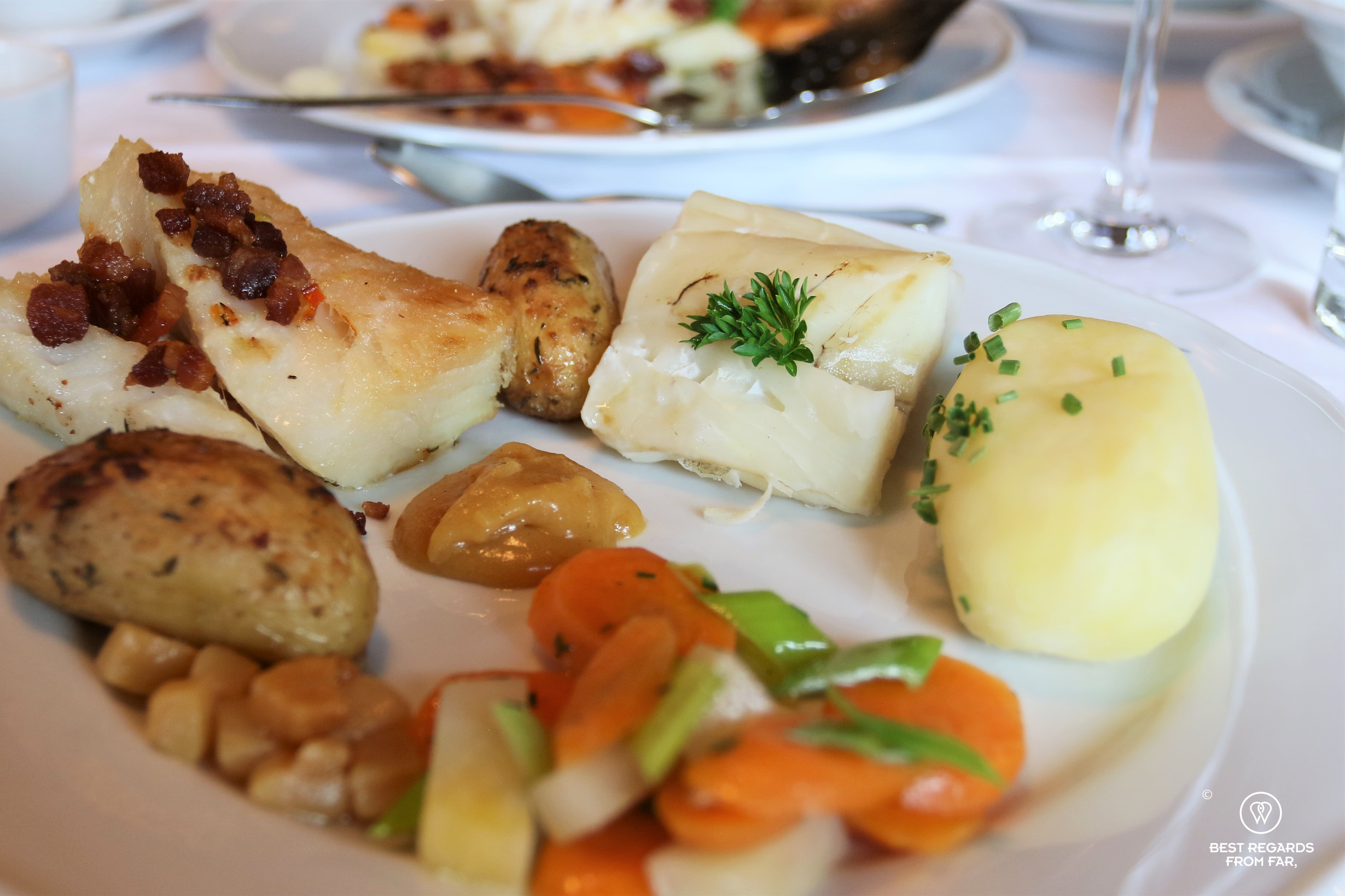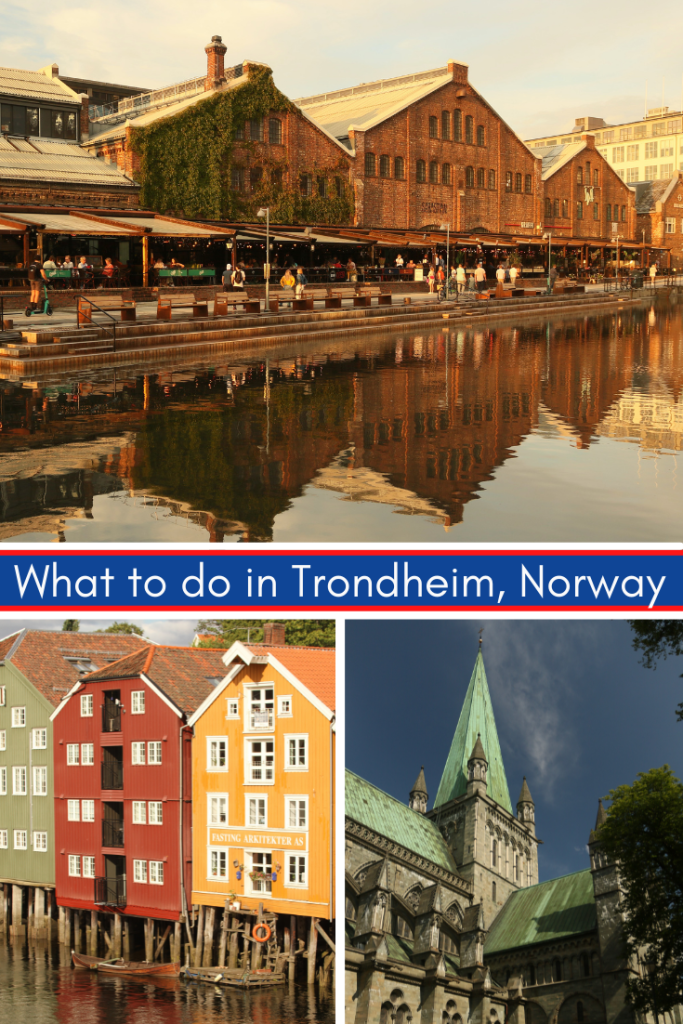Text: Claire Lessiau
Photographs: Claire Lessiau & Marcella van Alphen
It is only thanks to the fish! Mastering the drying of cod, fished in the winter off the coast of Lofoten, transformed this fish into a sought-after and profitable commodity exported all over the world. Without the nutritious stockfish with no expiration date, the Vikings would not have been able to survive their long journeys to Greenland or America; the Hanseatic merchants would not have established profitable businesses in Bergen; Norway would have missed out on one of its most important sources of revenue; and Lofoten would have never seen its cute and colourful fishermen’s cabins pop along its shores attracting so many today and in which it is so enjoyable to stay.
Pin it for later!
From the narrow granite platform atop the “the Goat” rock formation, the landscape of Svolvær and its surroundings is majestic. In the distance, the village of Kabelvåg was the liveliest village of Lofoten before its harbour became too small to accommodate thousands of motorboats and local ferries in the early 1900s. Its cute church tower rises amongst the green peaks. At my feet, Svolvær, the capital of Lofoten. It is hard to believe the town used to be composed of separated islands that have been consolidated together by excavating the surrounding hills. Svinøya, the most ancient part of Svolvær looks small compared to today’s city. The imposing breakwater leads ships in and out of the harbour while protecting it from the powerful Winter storms. In the early 1900s, the development of Svolvær allowed for the coastal express Hurtigruten to land in order to bring supplies and provide a much faster way of transportation to local inhabitants. Today, the local express has turned into a mid-range cruise ship bringing its flocks of mature tourists daily, for a few minutes spent between the ice bar and the tourist shops downtown.



I get distracted in my contemplation by some approaching grunting and clicking sounds. To appreciate such a view requires a bit of effort, and photographer Marcella van Alphen is currently climbing the cold granite face to reach the small platform. The carabiners attached to her harness resonate against the vertical rock. The adventure started by ascending a stony staircase built by Sherpas to approach the climb at the foot of “the Goat”, or Svolværgeita in Norwegian. As we geared up looking at this upright piton emerging from the mountain, the view on the Eastern Lofoten Archipelago was already stunning. Our guide and owner of Northern Alpine Guides, Seth Hobby, checked our equipment thoroughly, then his: we will leave nothing on the rock face, using a clean climbing tradition. “There are four different ways to go up, from beginner’s 4 to advanced 6.c”, Seth explained before we started, installing a four-step alpine aider for the tricky first part with its slight overhang to decrease the grade of the climb. All along the outing, he has been describing the holds in the challenging sections while he was climbing up, as we carefully watched every of his move before venturing ourselves.






Marcella’s hand reaches the platform. With adrenalin still pumping, she soon joins me to admire the landscape in awe. Time stands still as life unfolds in Svolvær with its 5,000 inhabitants. Seth lets us enjoy as he prepares the repel down. Before the exhilarating way down, we take a look at Fløya, Svolvær’s highest peak culminating at 590 meters, and our next adventure. This peak does not require any guide nor rock climbing experience, except for the very last 30 meters. For the less sporty, the views at 560 meters are unspoiled and definitely worth the effort, all the more that on along the hiking path, views on the Goat, the natural Devil’s Gate rock bridge and the small fishermen’s cabins in the distance are simply amazing.


If Lofoten has developed thanks to the fish that also shaped its cultural landscape with its cute fishing villages, falu red fishermen’s cabins and wooden fish-drying racks called hjell, today, the archipelago thrives on tourism. Svolvær remains an important place for tørrfisk, Norwegian for stockfish, as reminded by the many drying racks all over Svinøya. However, drying fish is a lot more complicated than it seems! It is a long process that starts from the moment the fish is gutted and that requires a constant attention to ensure the optimal air and temperature conditions and minimum damage. The Lofoten climate is ideal: cold enough to protect the fish from insects and uncontrolled bacterial growth, mild enough to prevent frost from damaging the fish. Since the Hanseatic times, there have been dozens of different qualities of stockfish with a wild array of prices making the wealth of the Bergen traders who had exported them all over the world for centuries. Still, the best place to taste stockfish-based and other seafood dishes from the North Atlantic remains the Norwegian archipelago!




In Svolvær, Marius Survila, the head chef of the Kjøkkenet restaurant offers an excellent and rather short menu focusing purely on local products. The circuit hardly gets any shorter than from the sea to the former 1880 fish processing plant, salting house and cod liver oil factory where the intimate and low-key restaurant is housed today. The owner, Allis Olufsen, is from a family of fishermen, ensuring that only the best products are delivered to Kjøkkenet. Her family recipes are shared with Marius who betters them thanks to his international experience and compose the “mother’s old cooking book” section of the menu. “Stockfish is more robust than fresh cod, so it can be cooked it in many more ways” Marius explains as he details his menu to us. “The boknafish is a type of stockfish that has been dried less, so it has a more delicate texture” details the chef. Actually, it is not that easy to find boknafish on menus, even in Lofoten and this is the perfect opportunity to compare it to the stockfish. “The tørrfisk gets soaked for 8 days before being oven-roasted to get its consistency back,” the chef continues. Served with seasonal butter steamed vegetables, salted lard, boiled potatoes and a delicious homemade honey mustard – a secret Olufsen family recipe -, it is not quite the best menu to go on a diet, and it is perfectly adapted to the local climate and cold Winters! It also seems the obvious conclusion after a long day exploring the summits towering Svolvær and mountain biking or hiking around!




On Svinøya itself, the Børsen Spiseri restaurant of Svinøya Rorbuer, also specializes in local specialties including klipfish, the salted version of stockfish, and hosts the satisfying breakfast for the ones staying in the authentic rorbuer established in 1828. Renovated and comfortable, the original fishermen’s cabins are part of the Norwegian historical heritage and scattered amongst the fish landing station of the Lofoten Cod Fishery, fish racks, and other traditional quayside buildings, such as the original 1828 old-fashioned general store that was the first shop in town. Stepping in means being propelled a century ago amongst photos of fishermen throwing a fish in a barrel to pay for a shot of liquor, and original hooks, lead sinkers, glass floats for the nets, lamps, leather boots, old packages of cigarettes, and tea and coffee tin boxes which visuals are not politically-correct anymore!



If genuineness and respect of the local history dictate the way the Svinøya Rorbuer has been operated, the comfort of the fishermen’s cabin, or rorbu (rorbuer in its plural form) has been greatly improved since the first ones were built in 1828 when men used to pile up in them during the fishing season. Today, the warm, fully-equipped and thoughtfully-decorated cabins provide an authentic experience to explore Eastern Lofoten and the Svolvær area, whether it is to climb the goat, to take in the panoramic view from the top of Fløya, or to taste the delicious local seafood.





Travel tips:
- To climb the goat, reach out to Northern Alpine Guides.
- To taste the best local fish, book your table at Kjøkkenet.
- For the most authentic stay, pick a Norwegian Heritage rorbu at Svinøya Rorbuer.
- Check out this interactive map for the specific details to help you plan your trip and more articles and photos (zoom out) about the area (short tutorial)!
For more in Norway:









